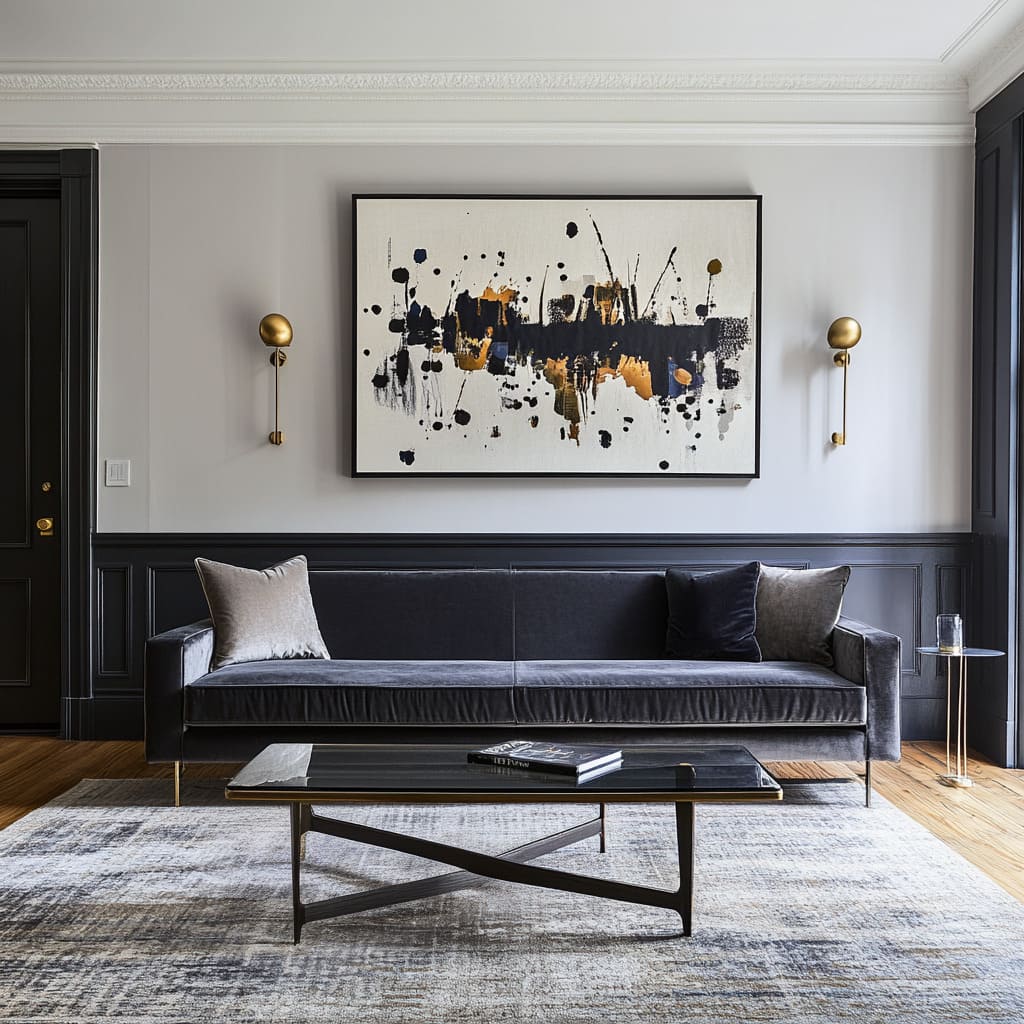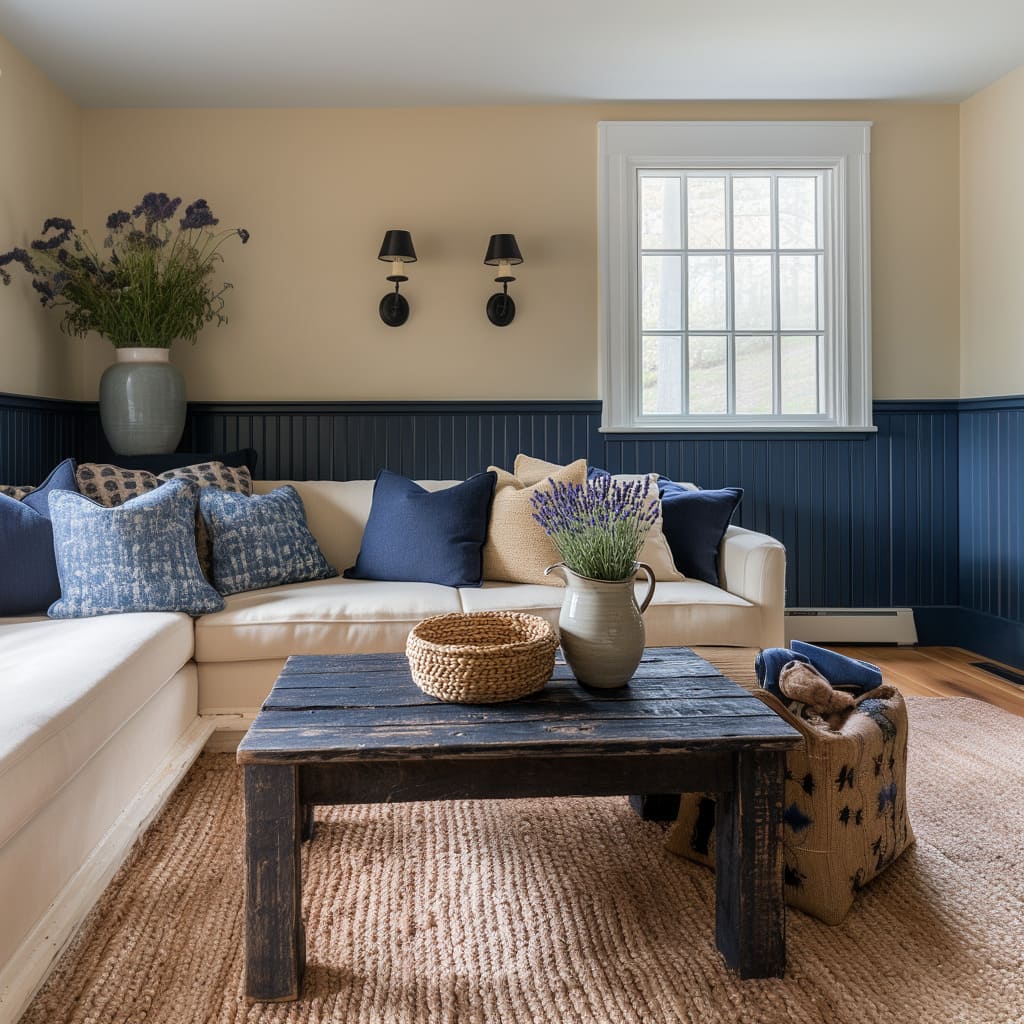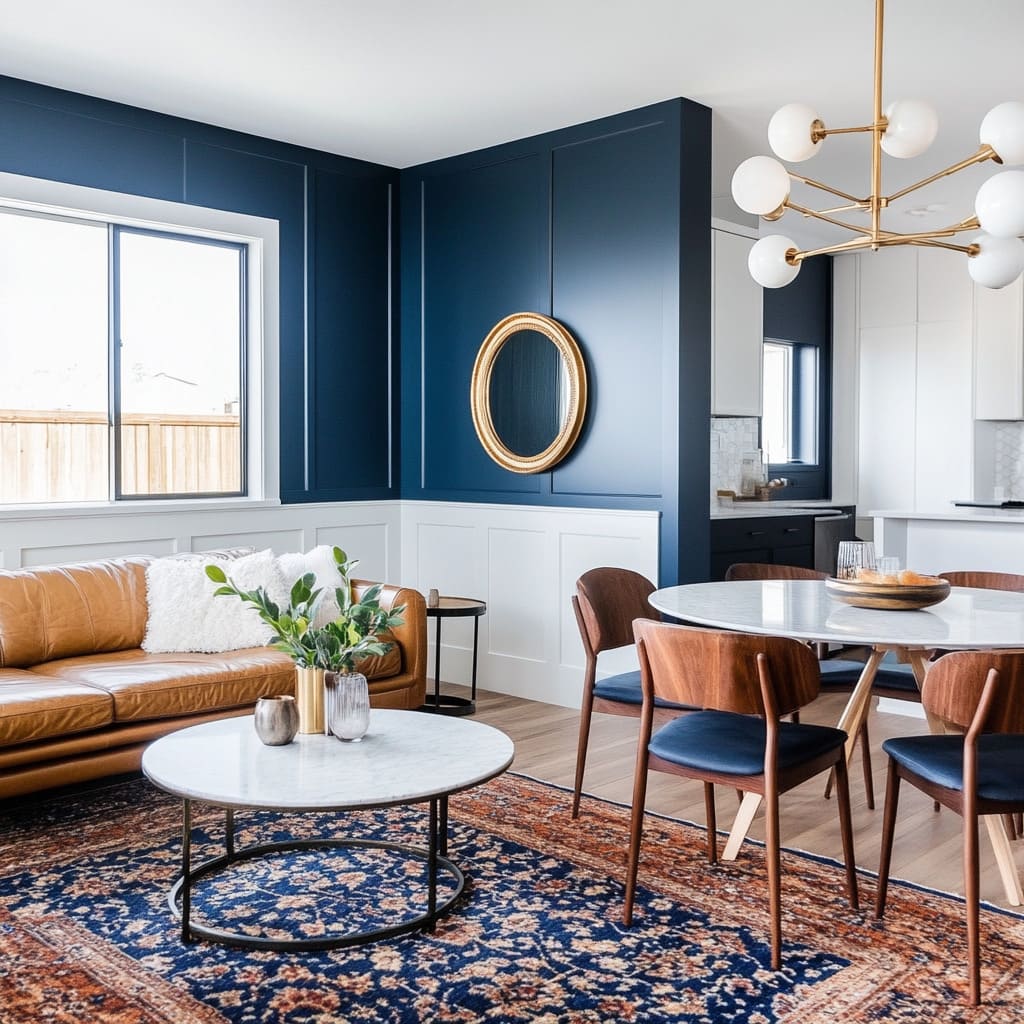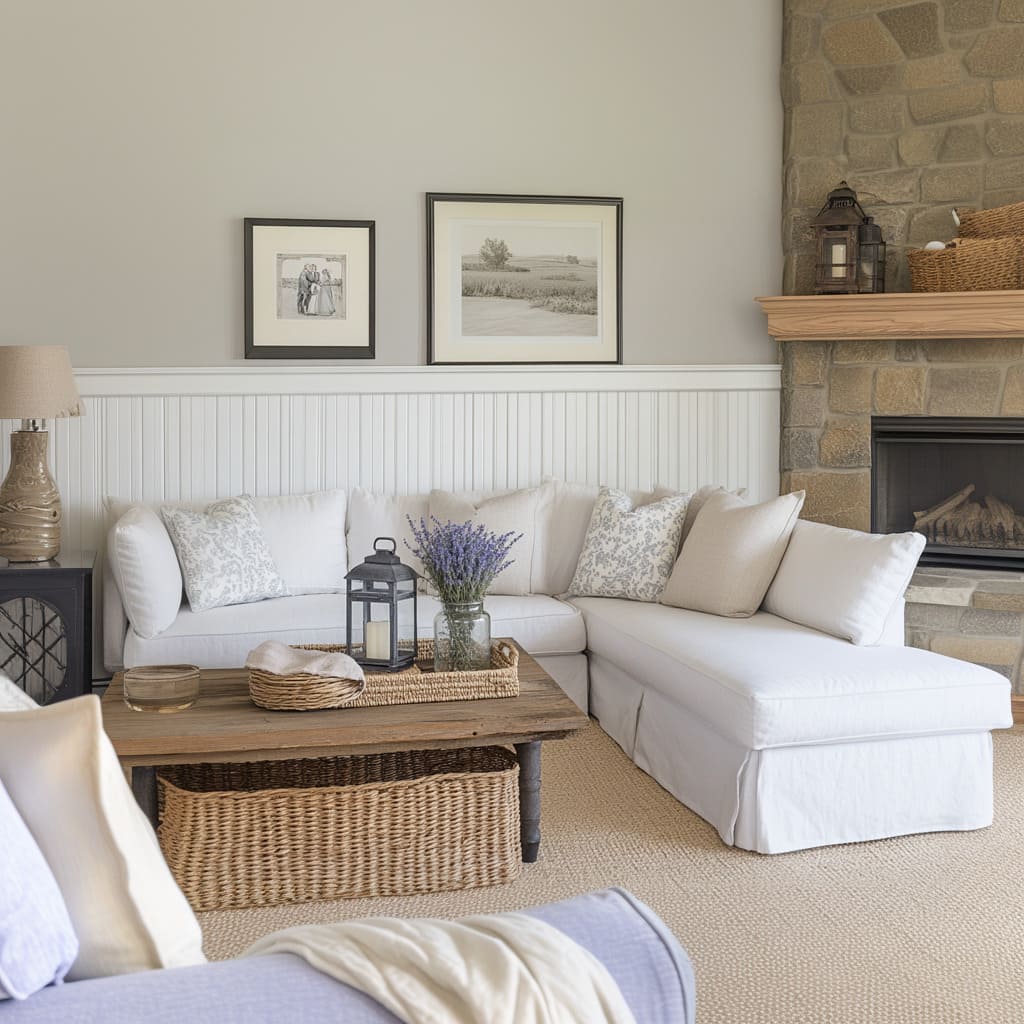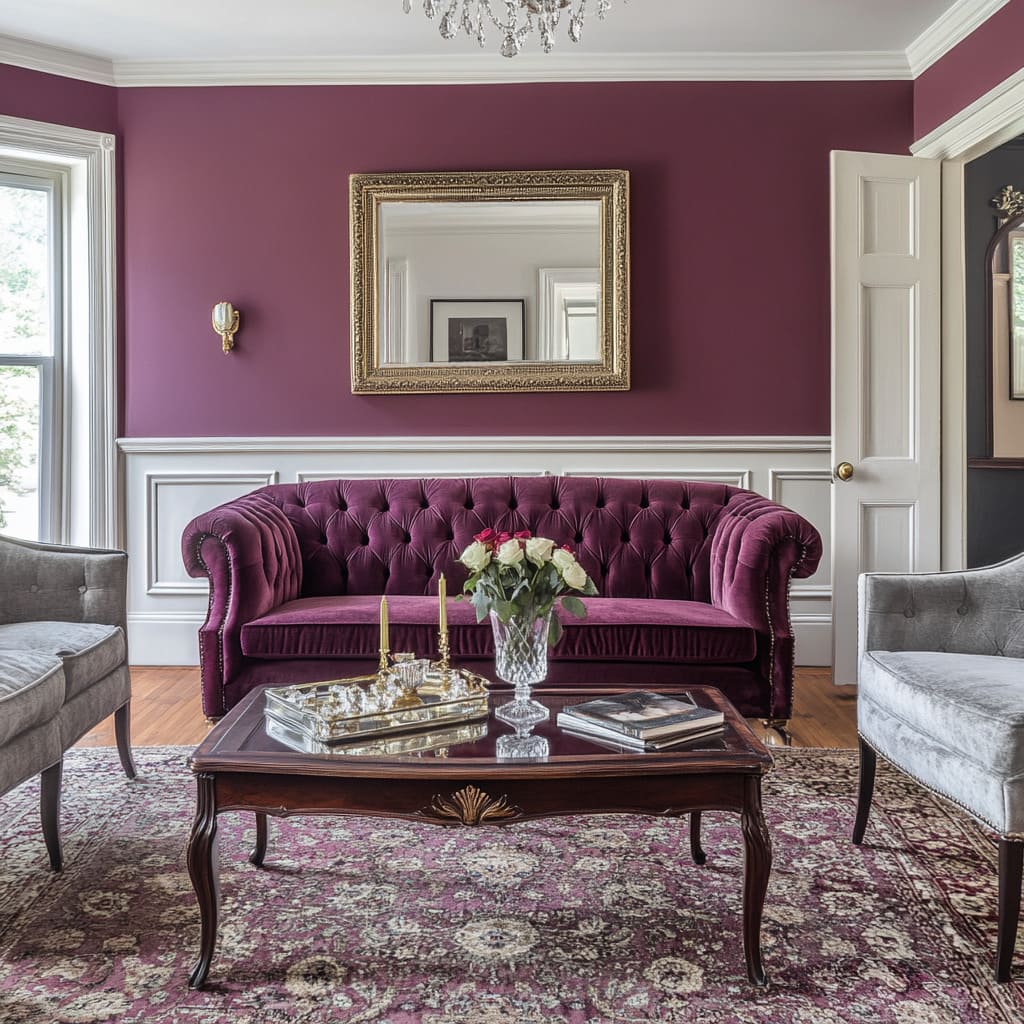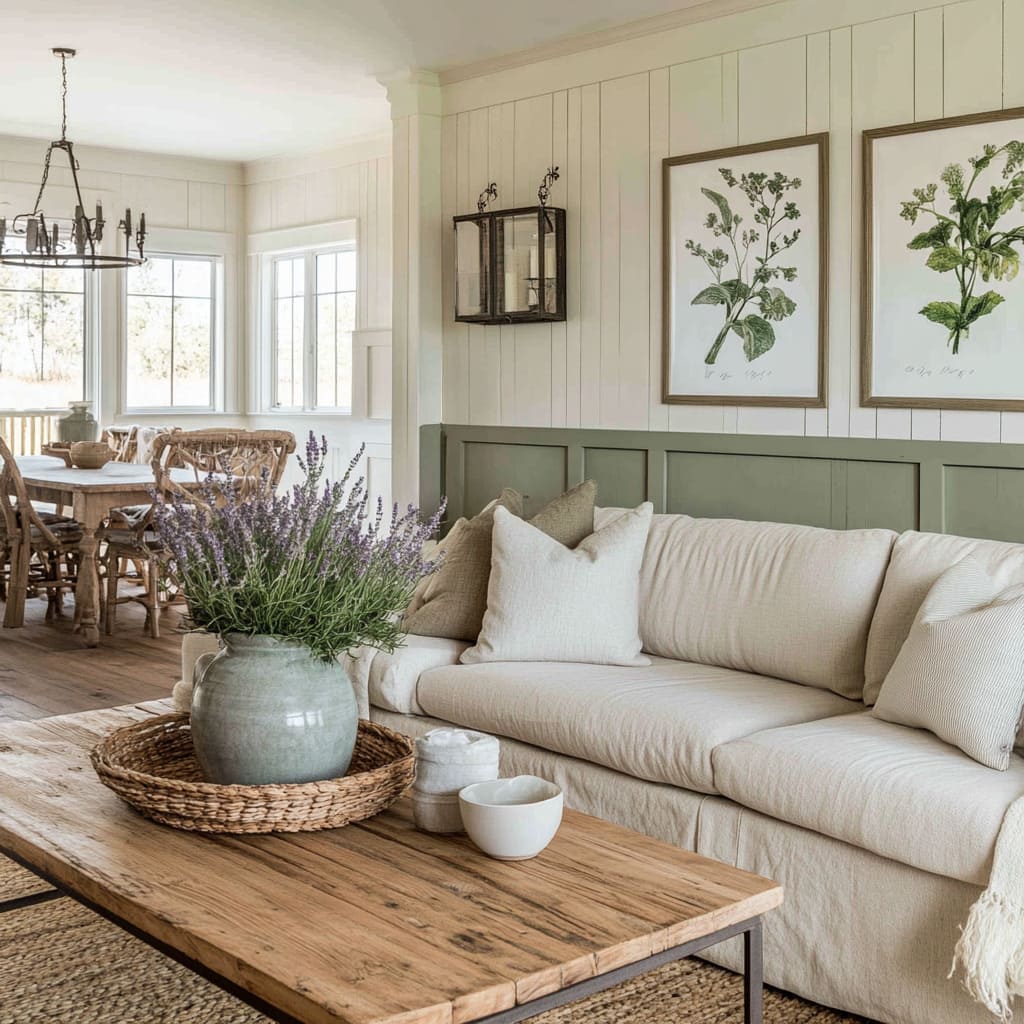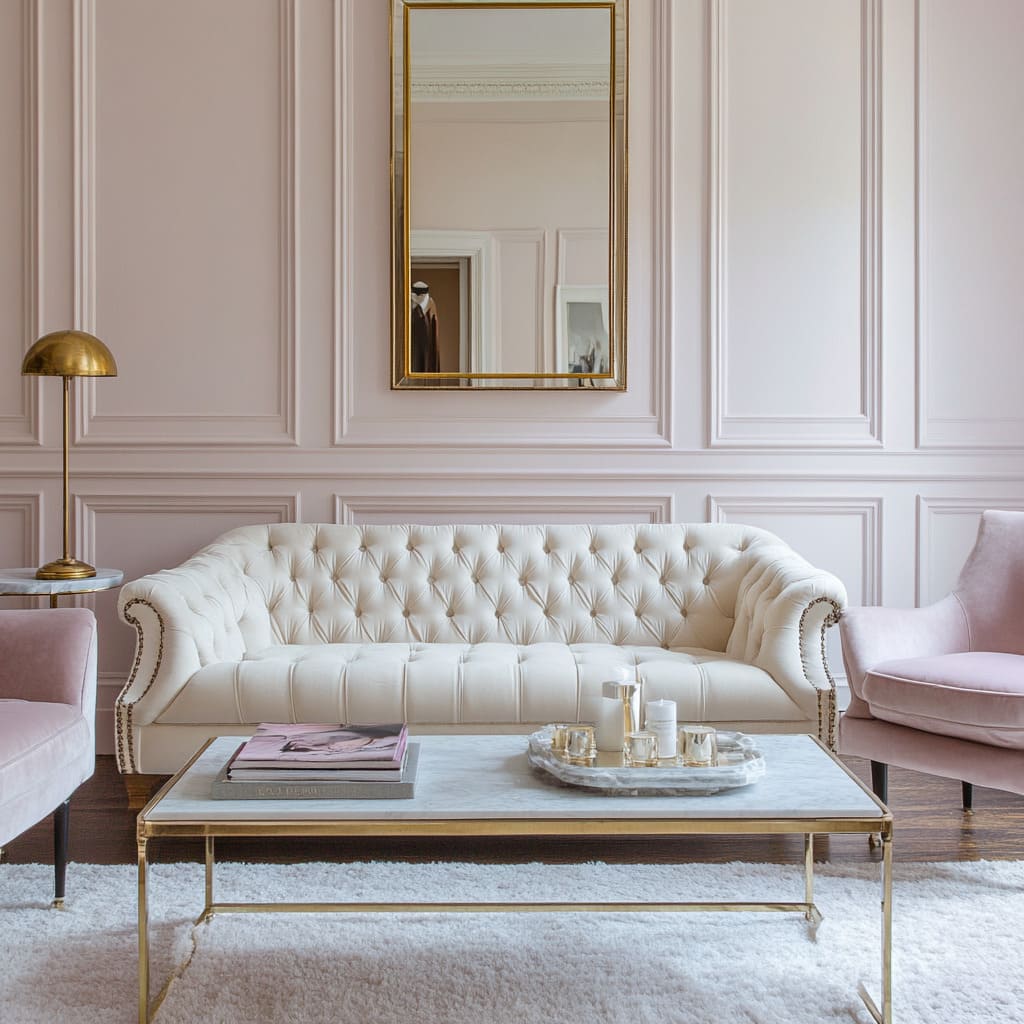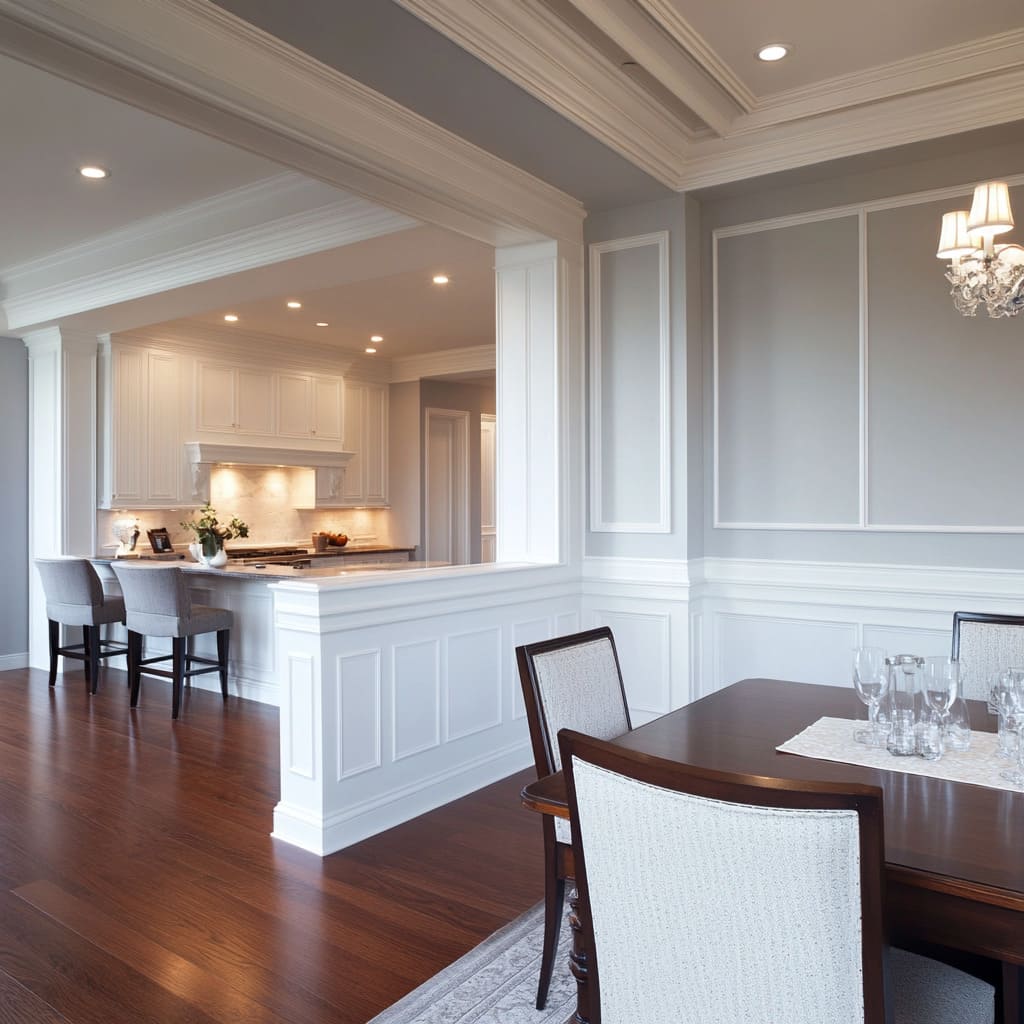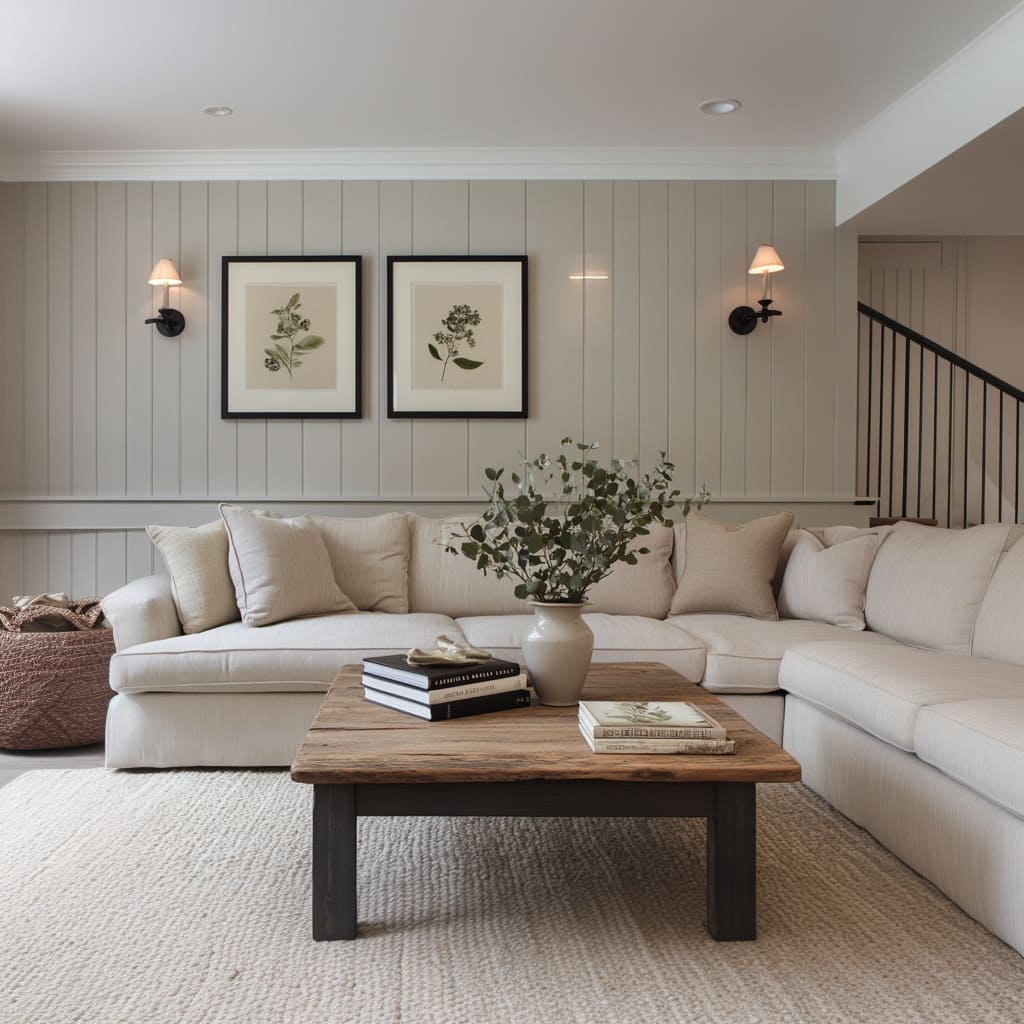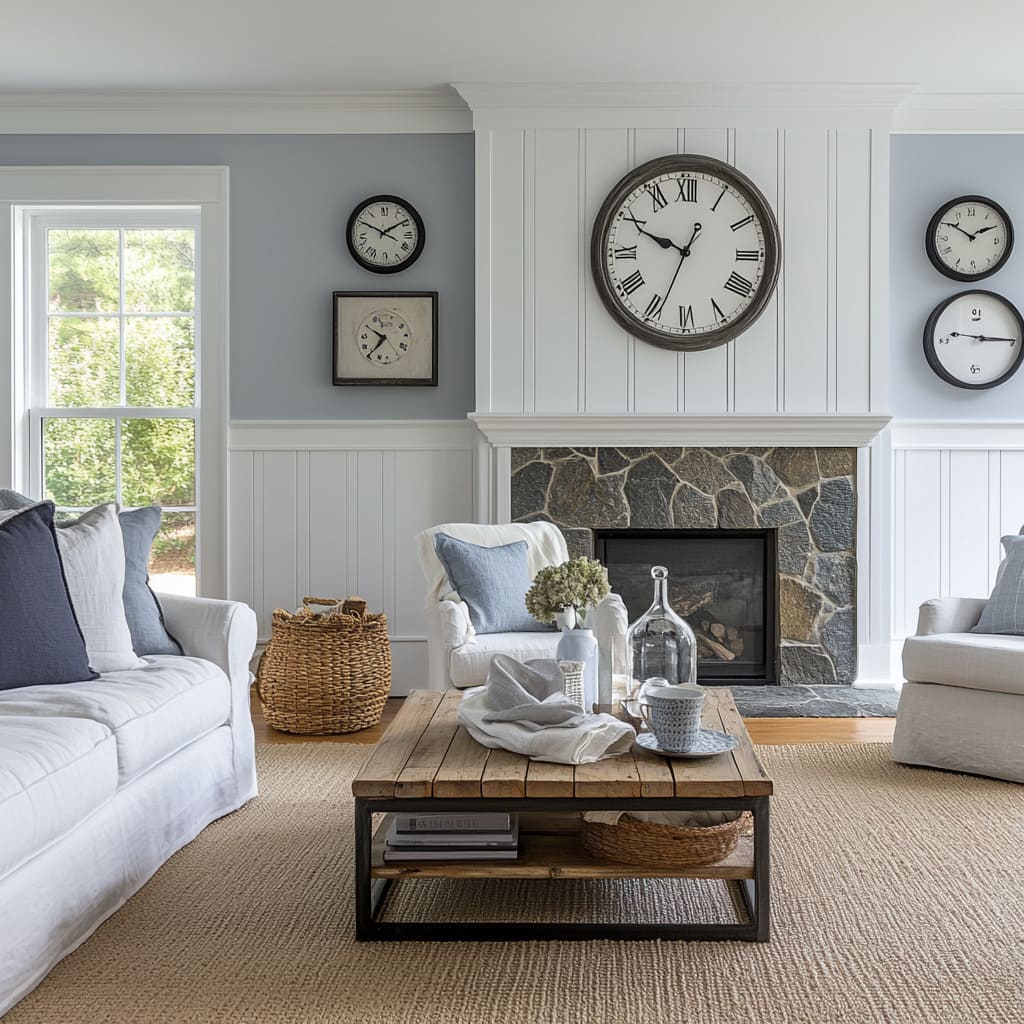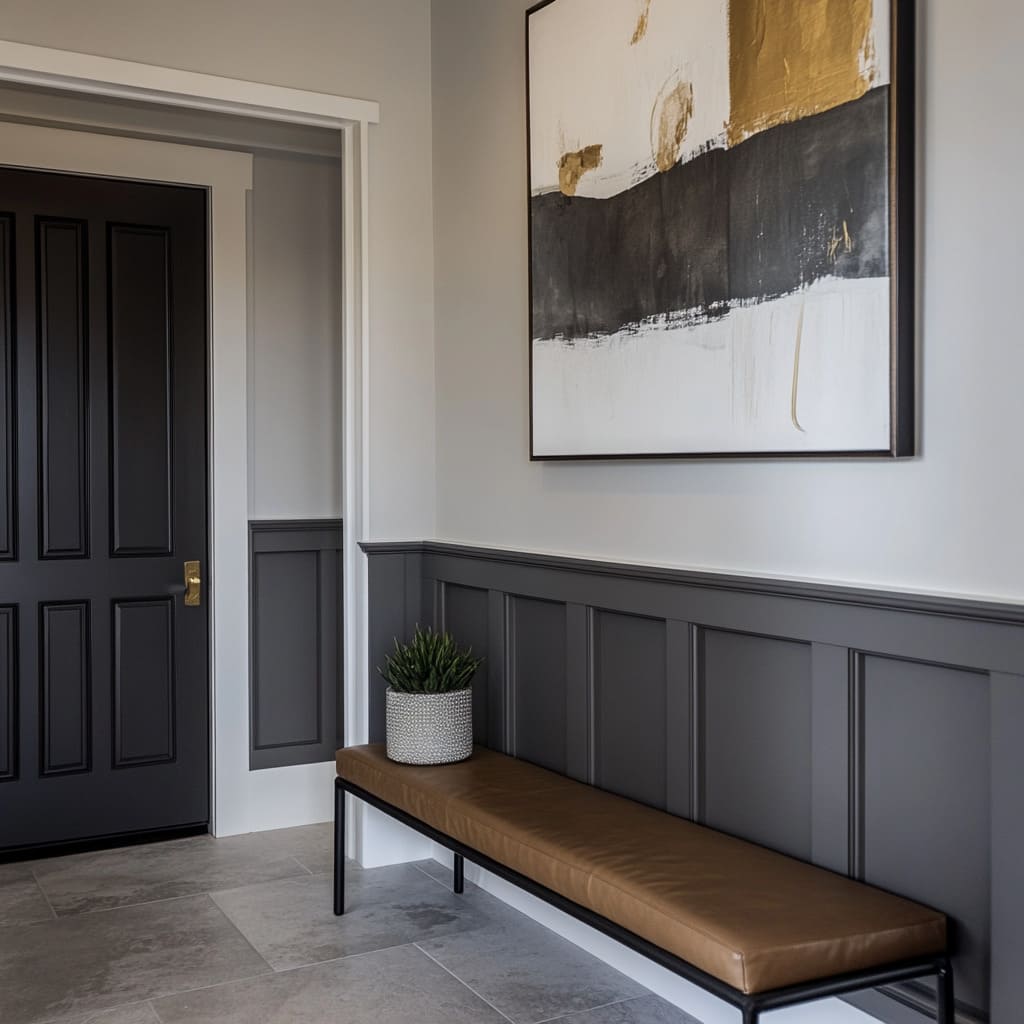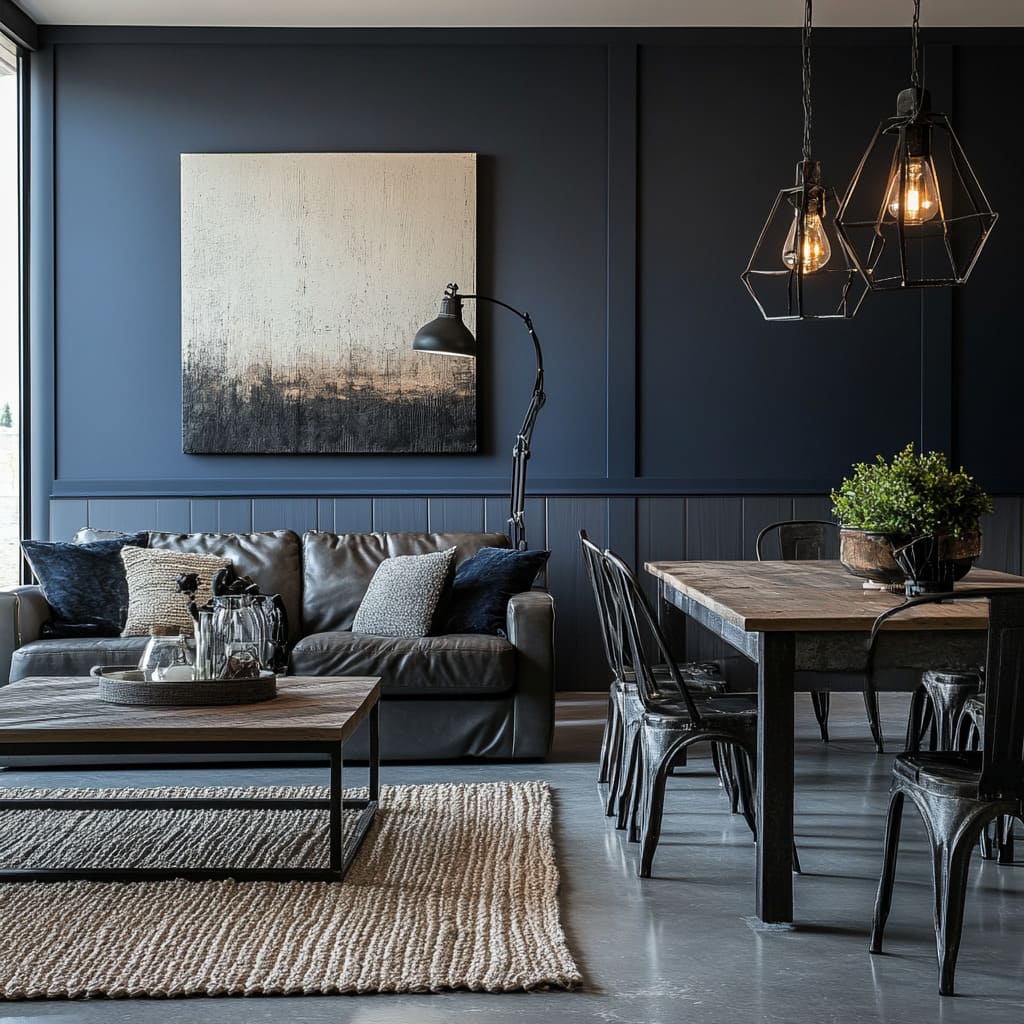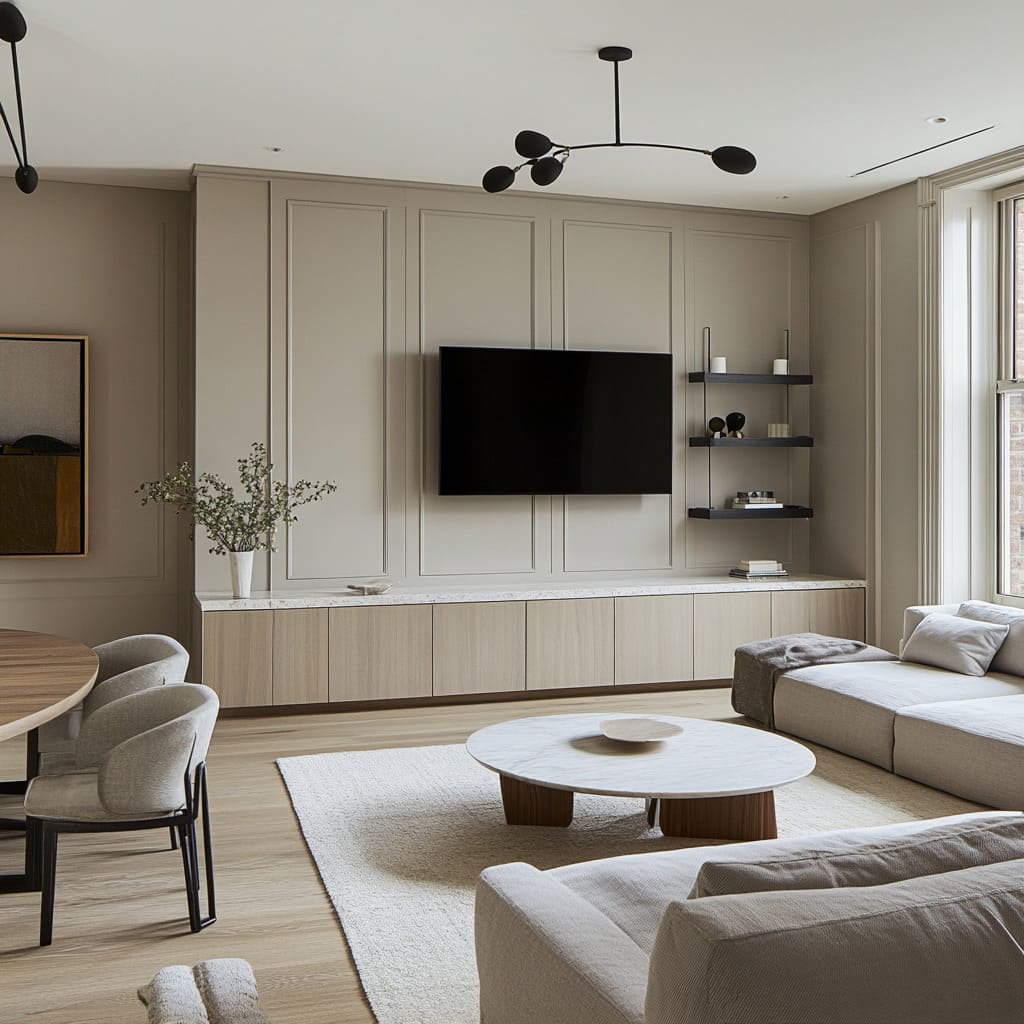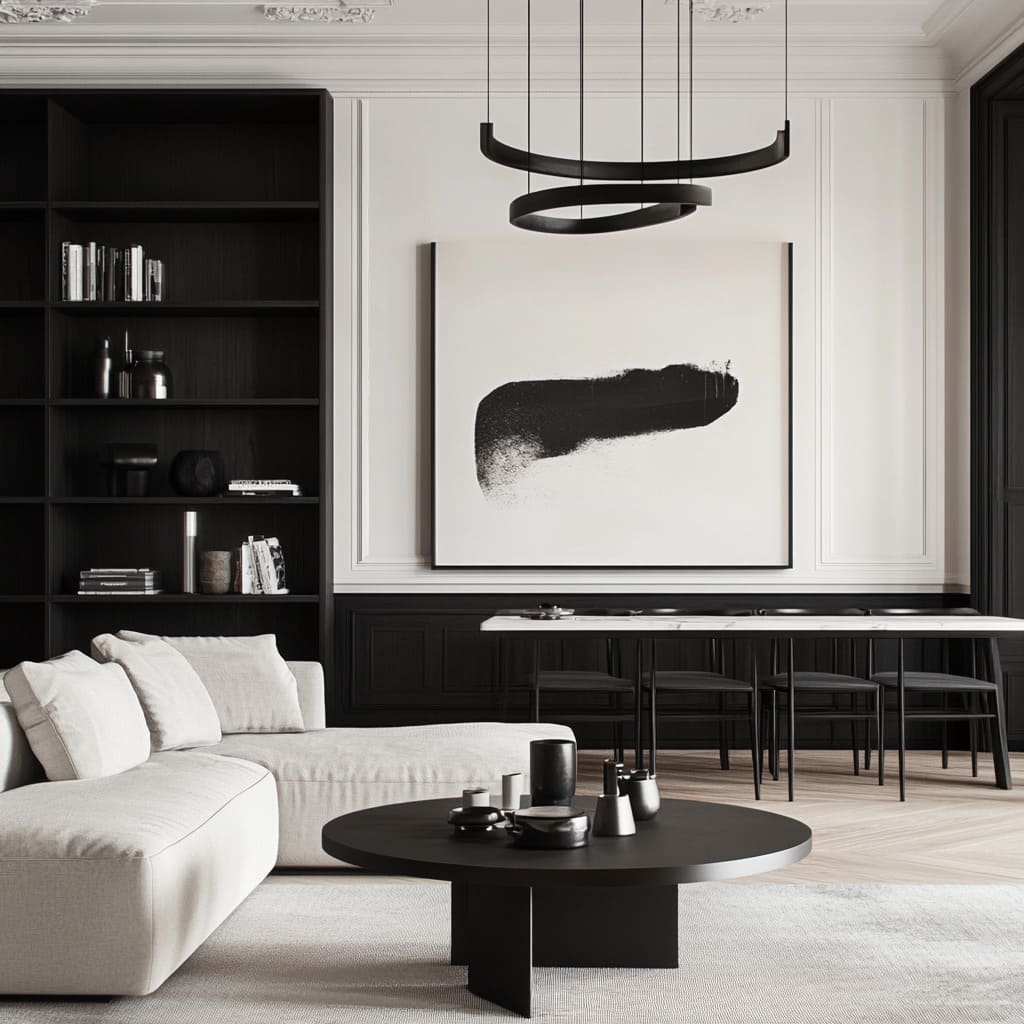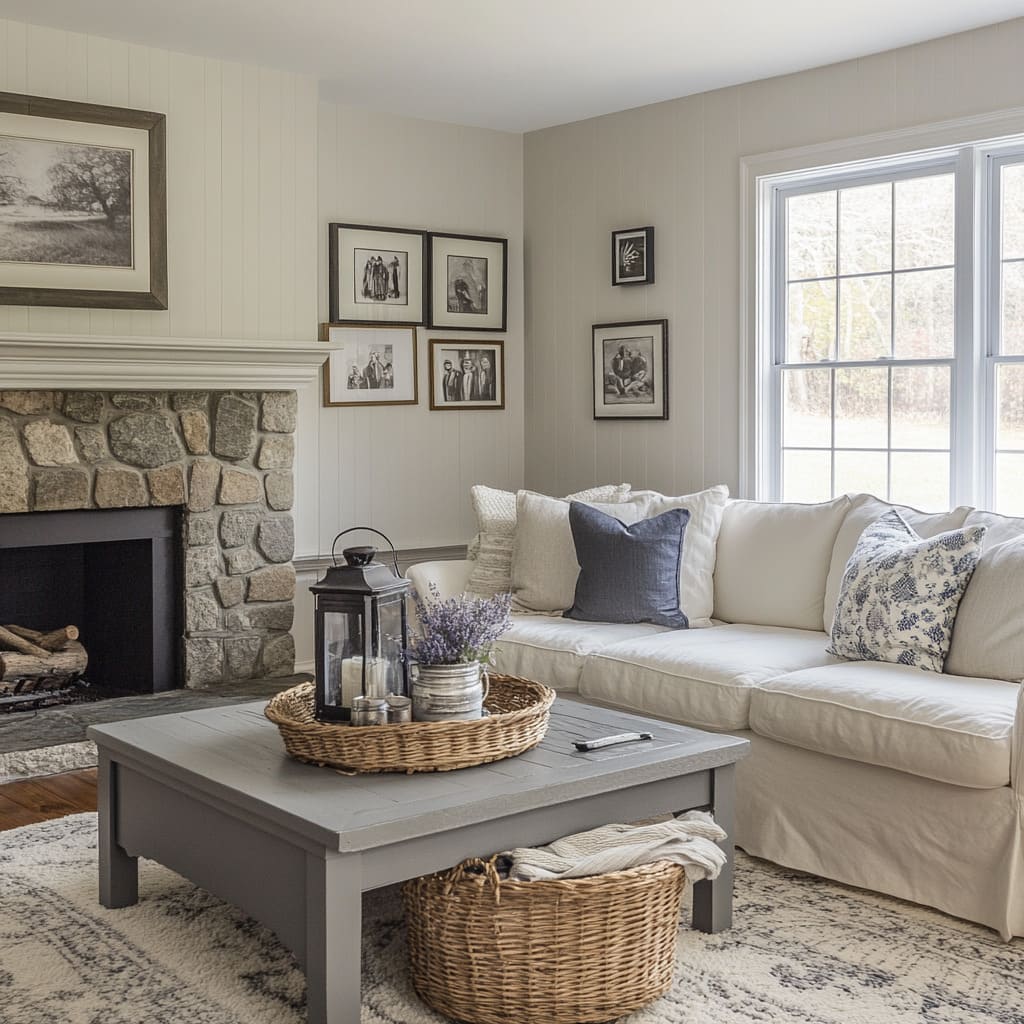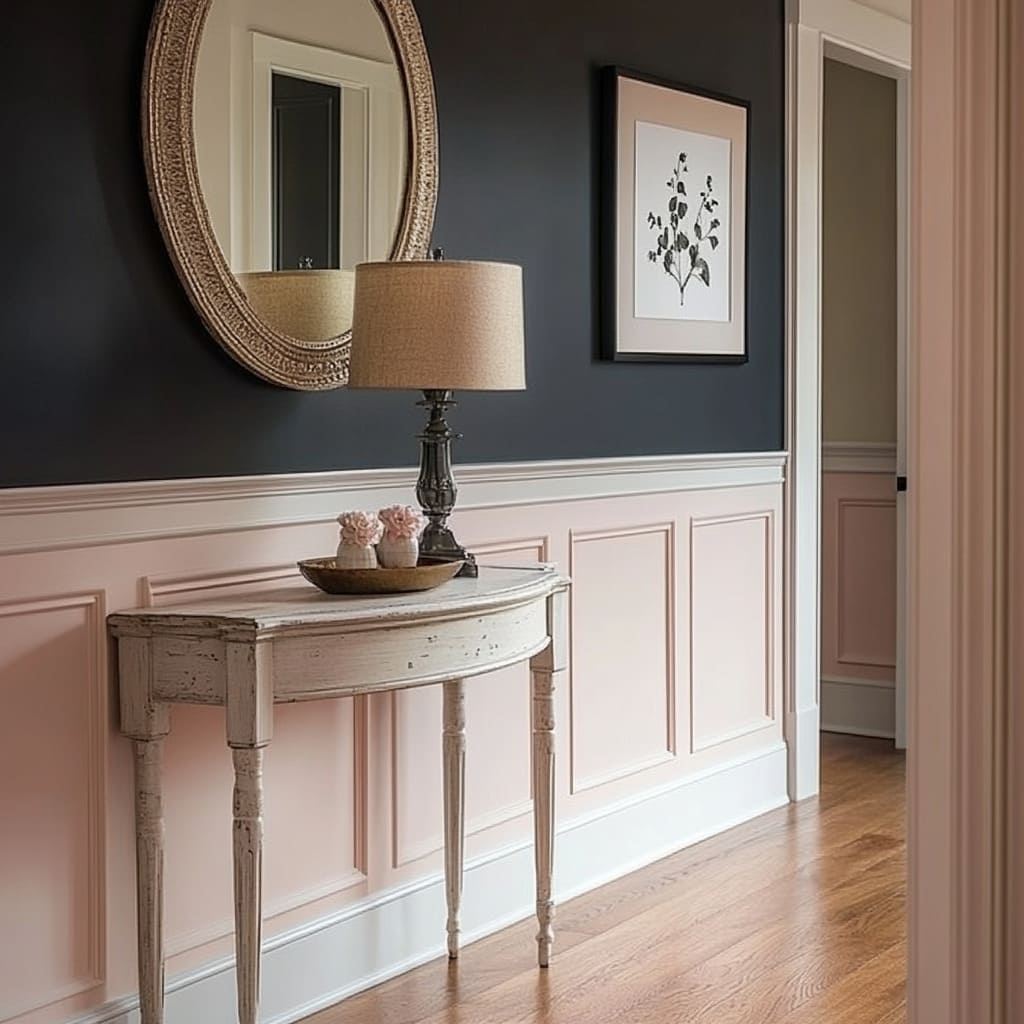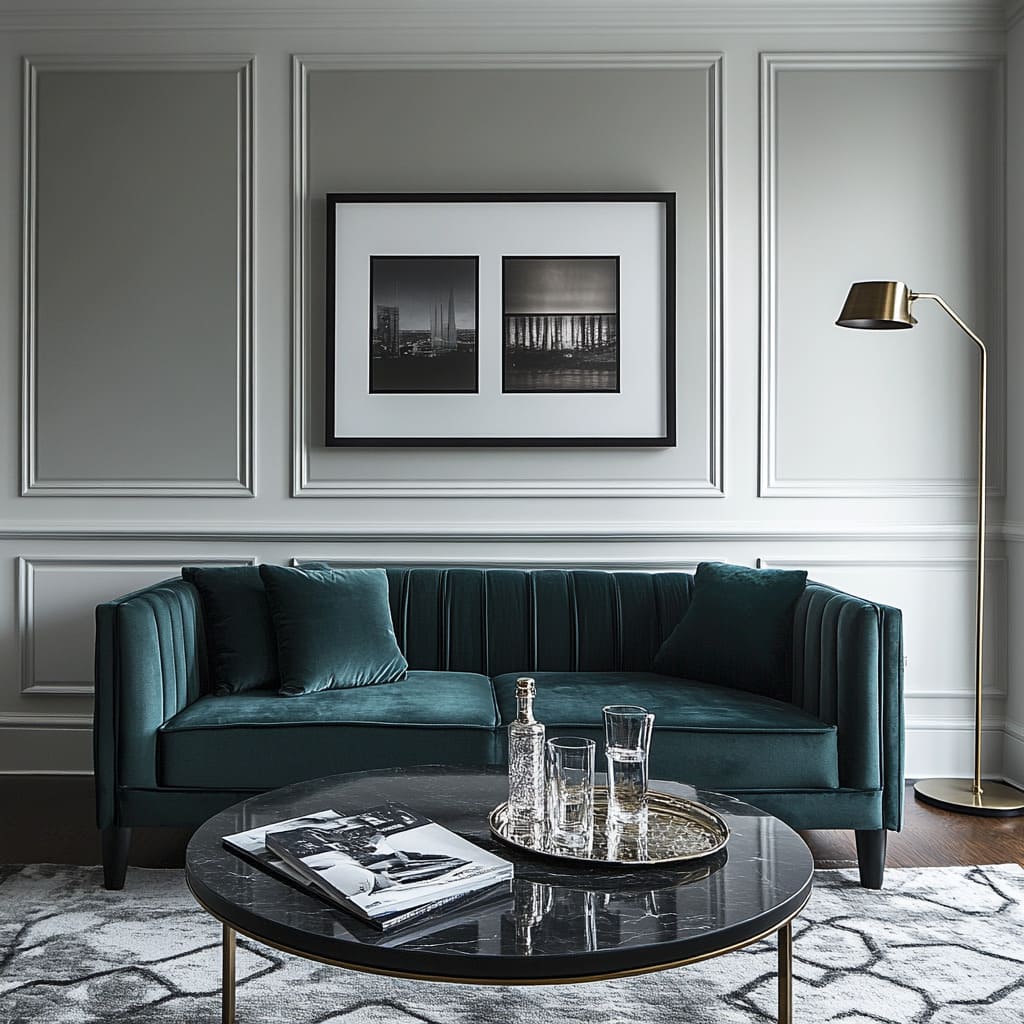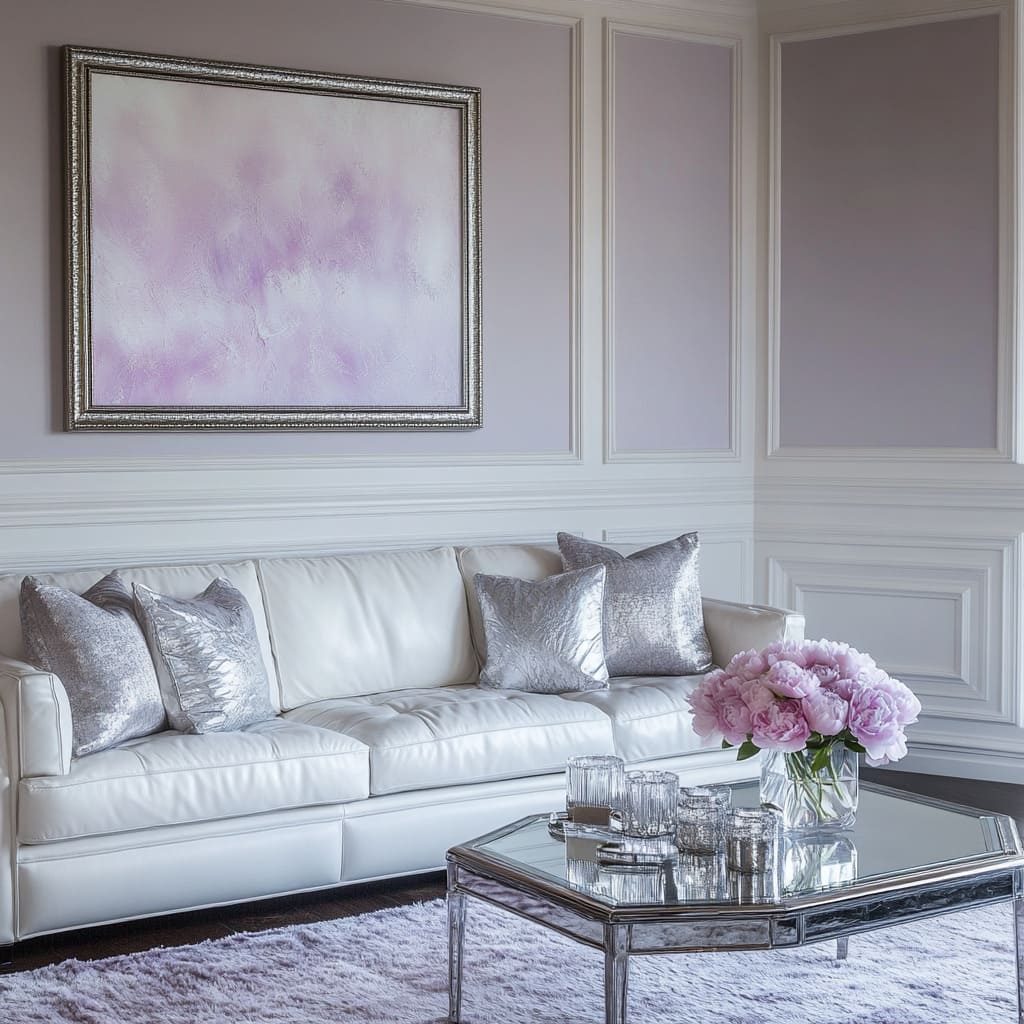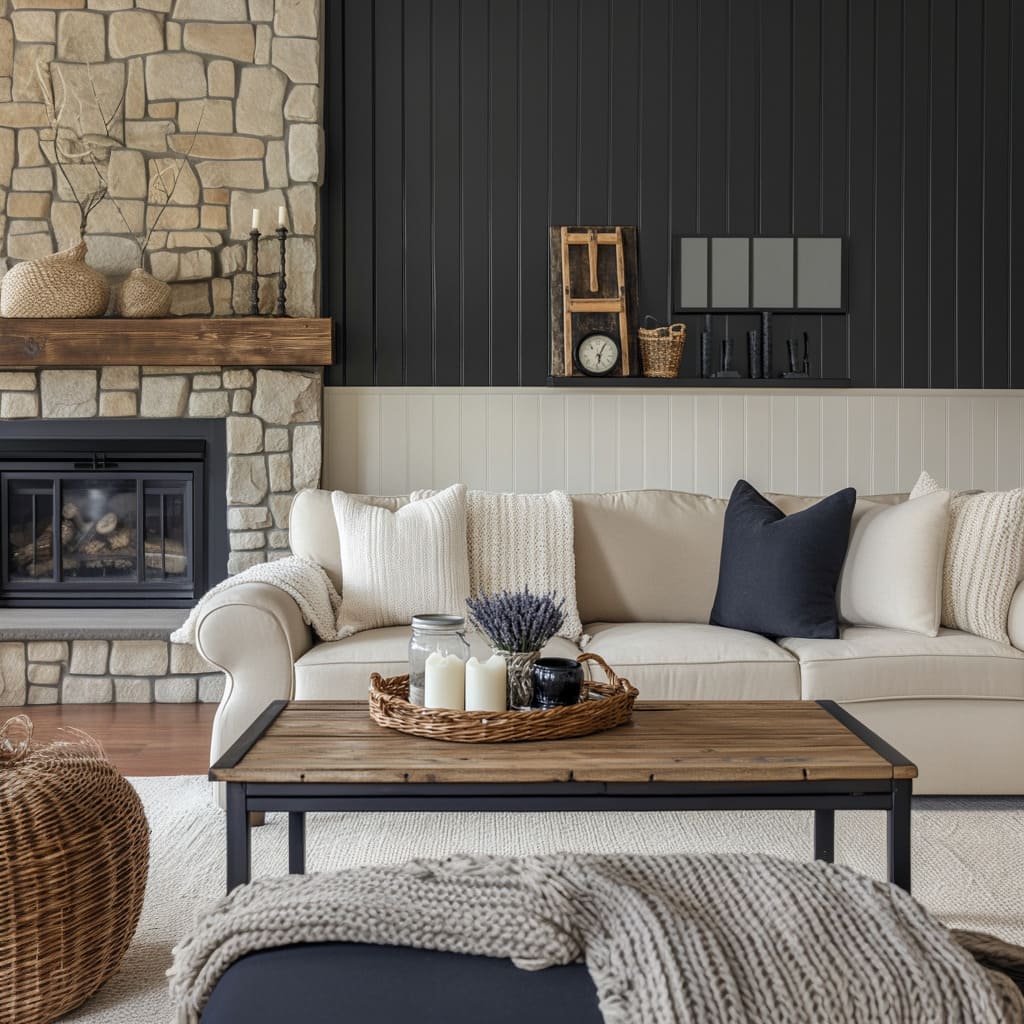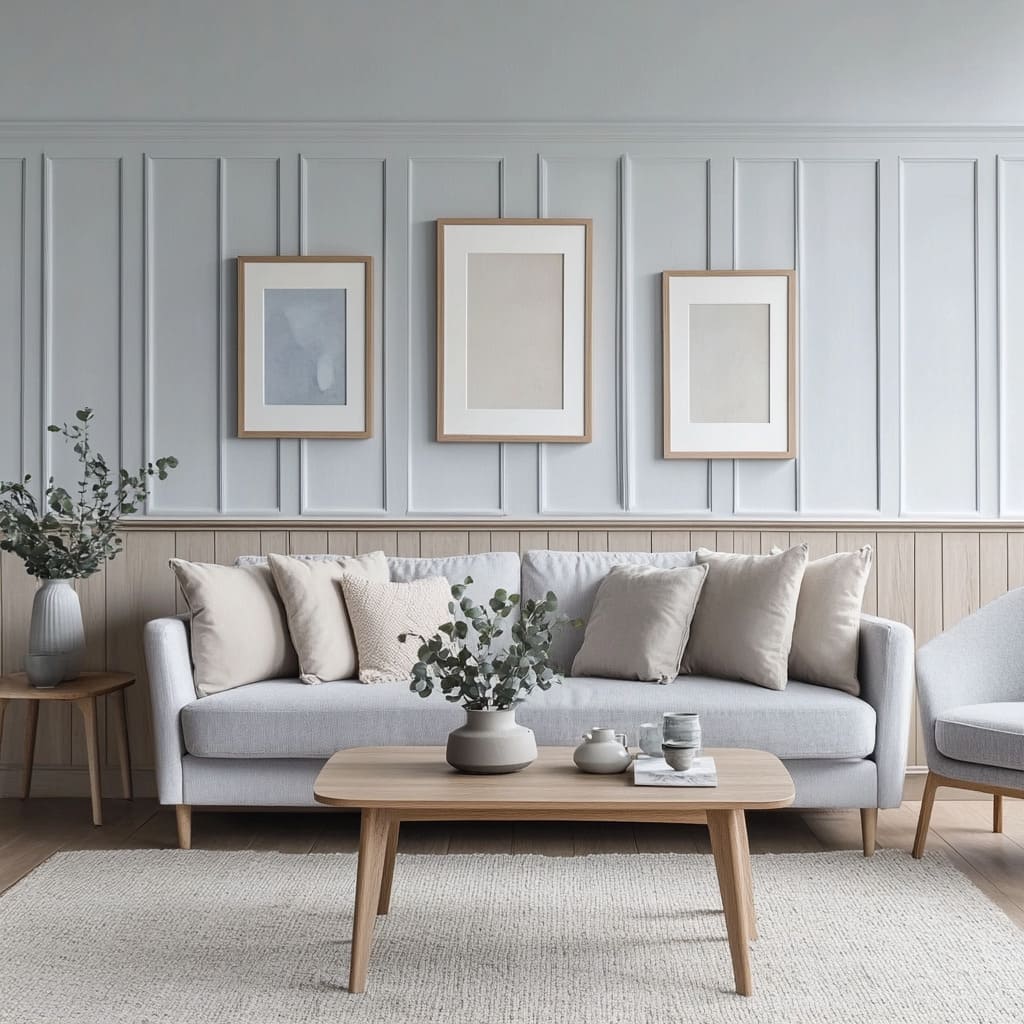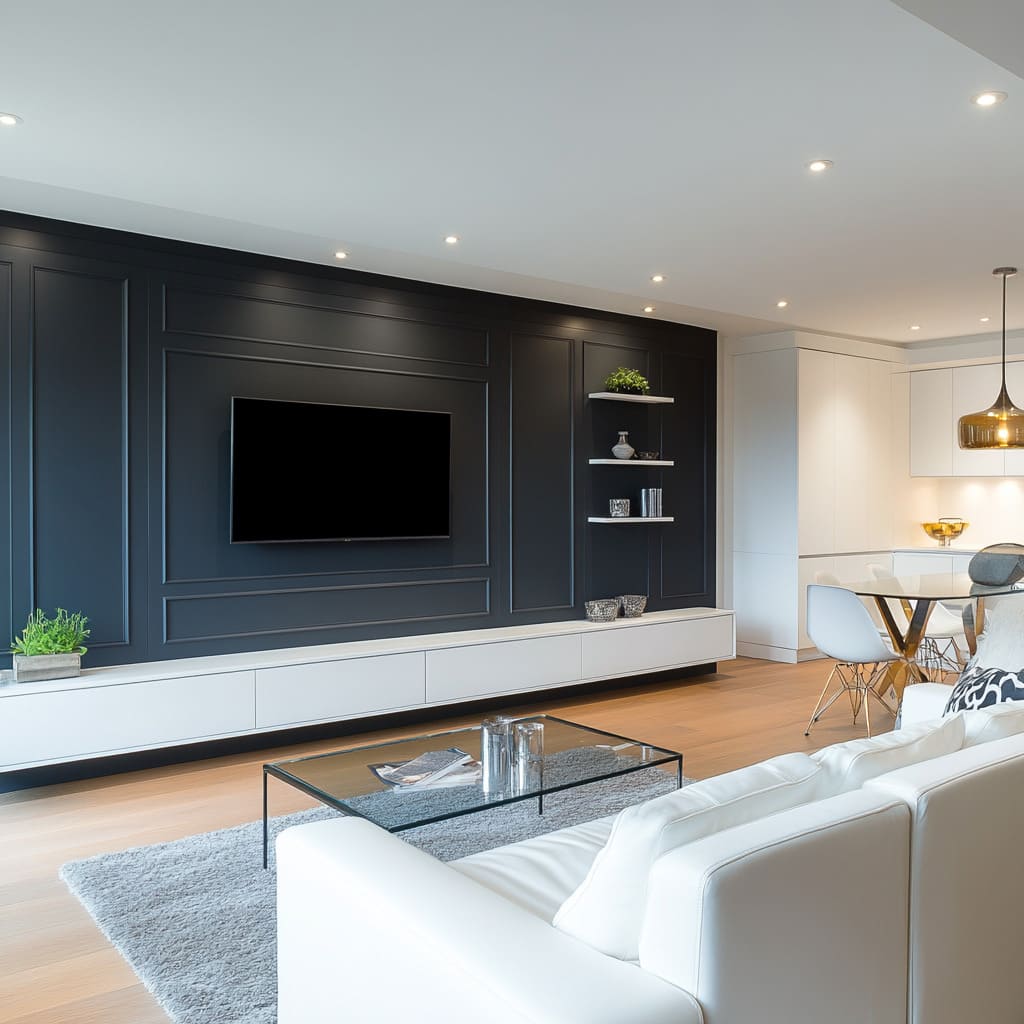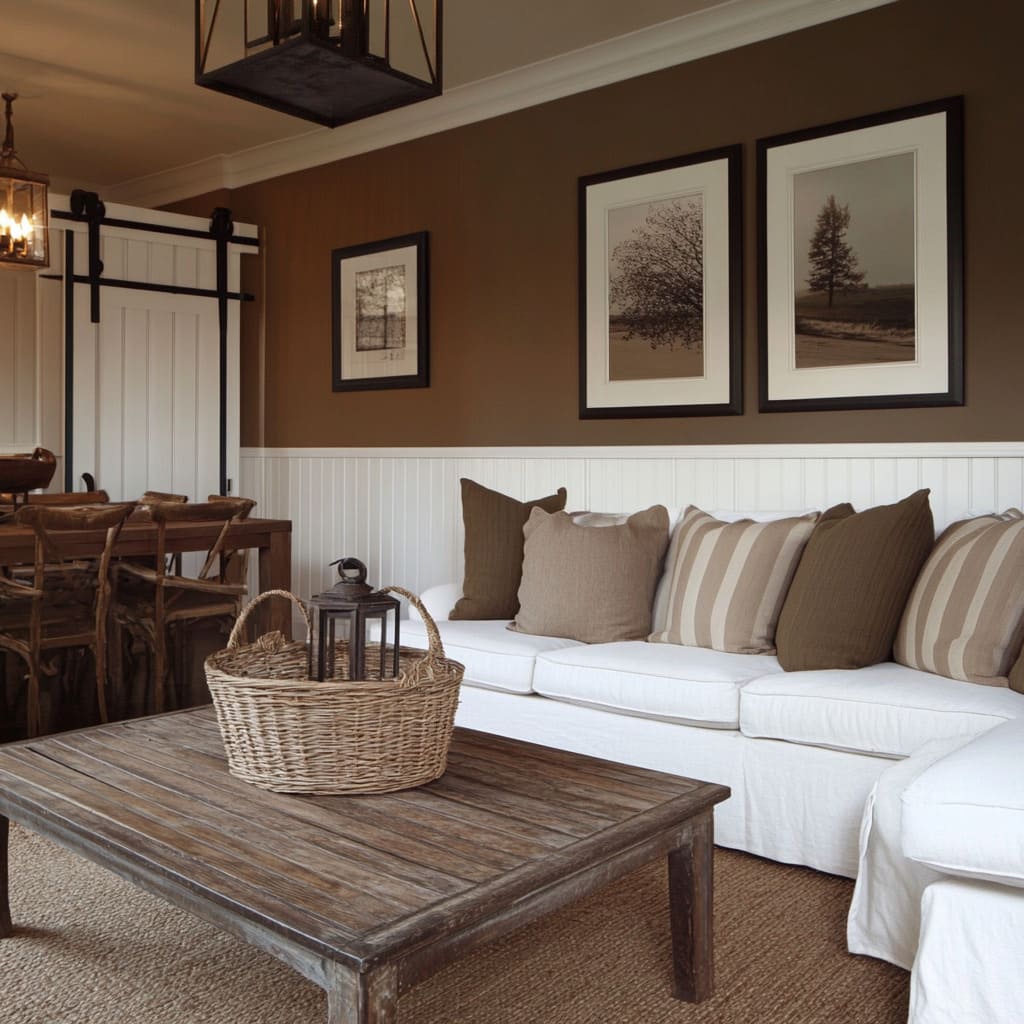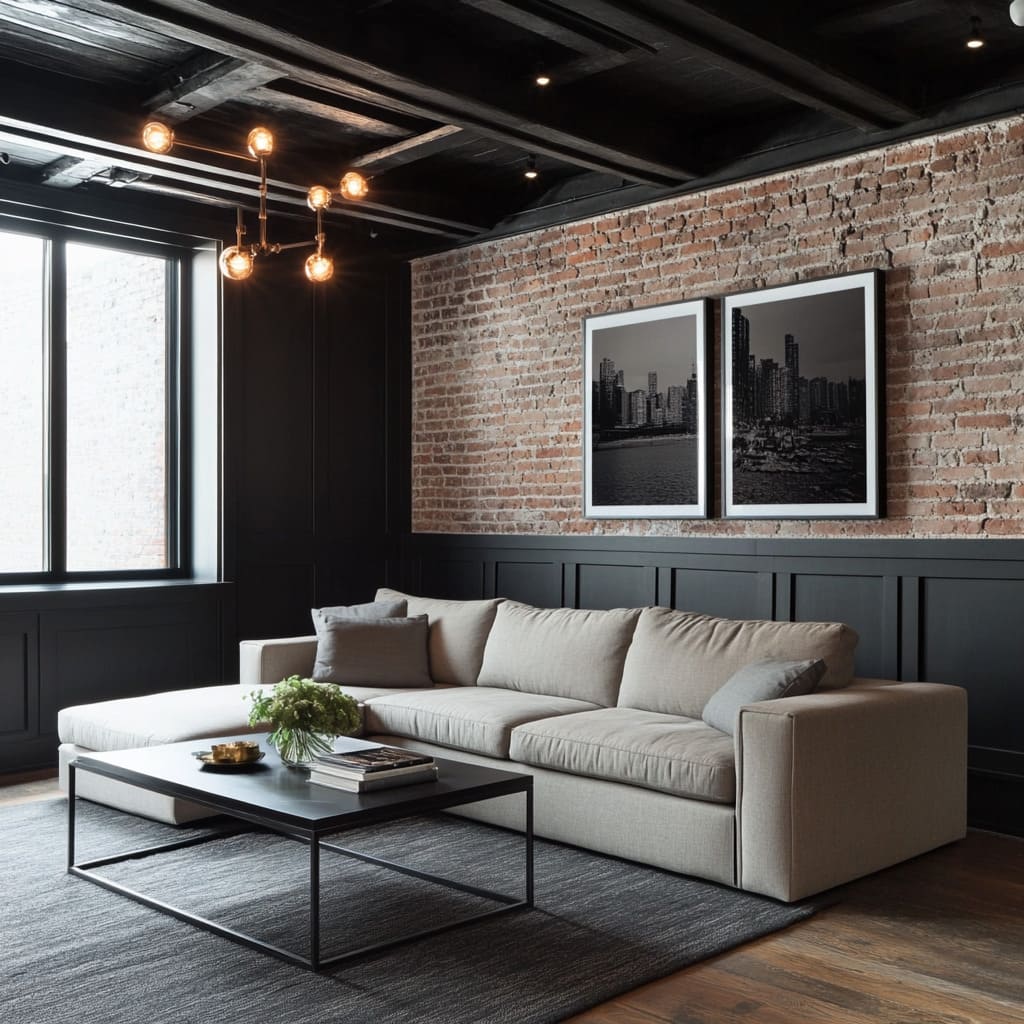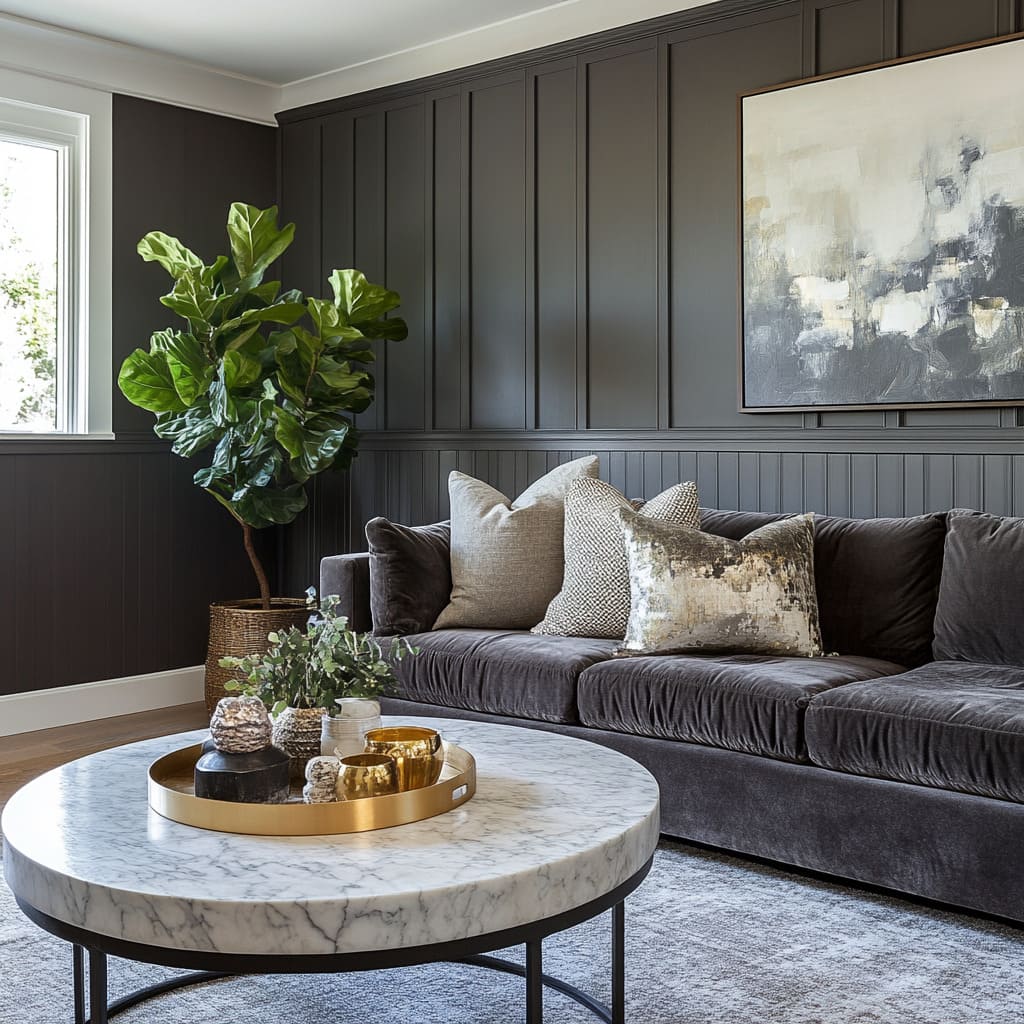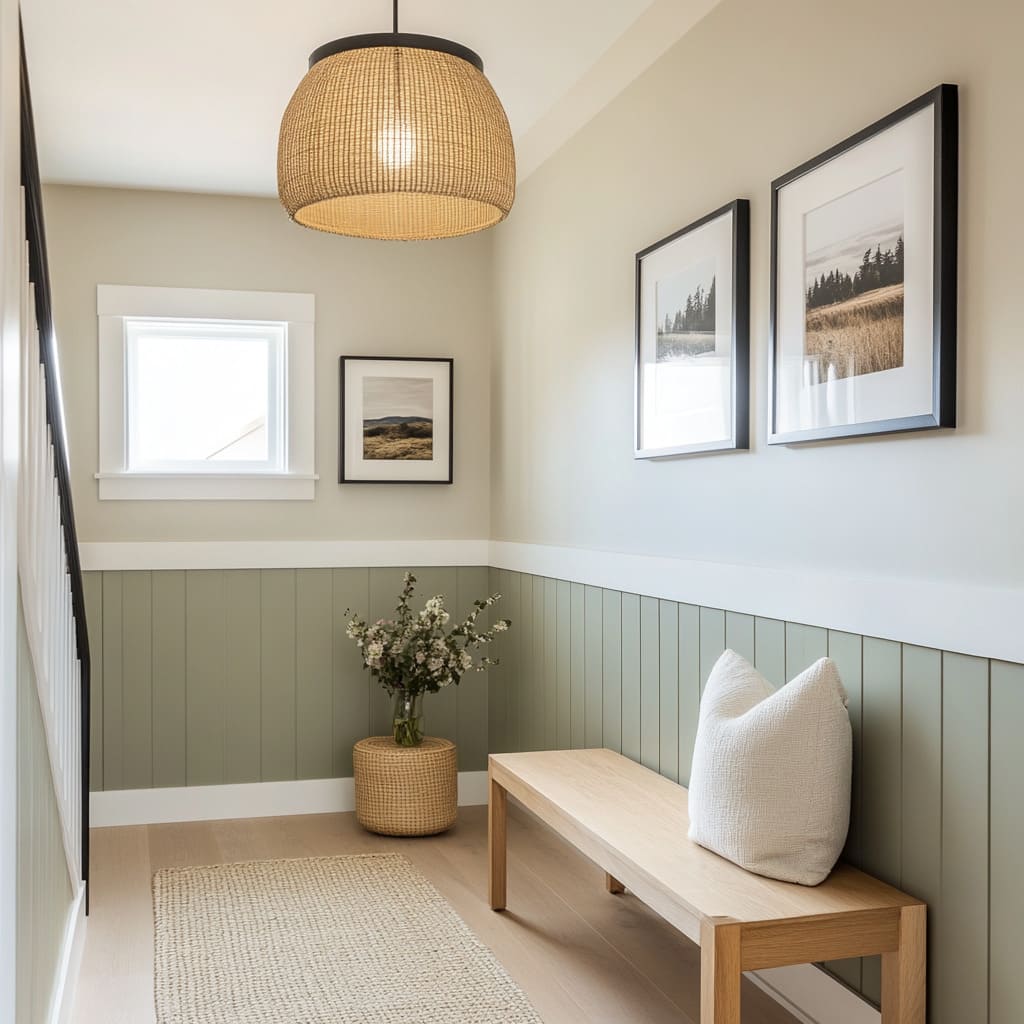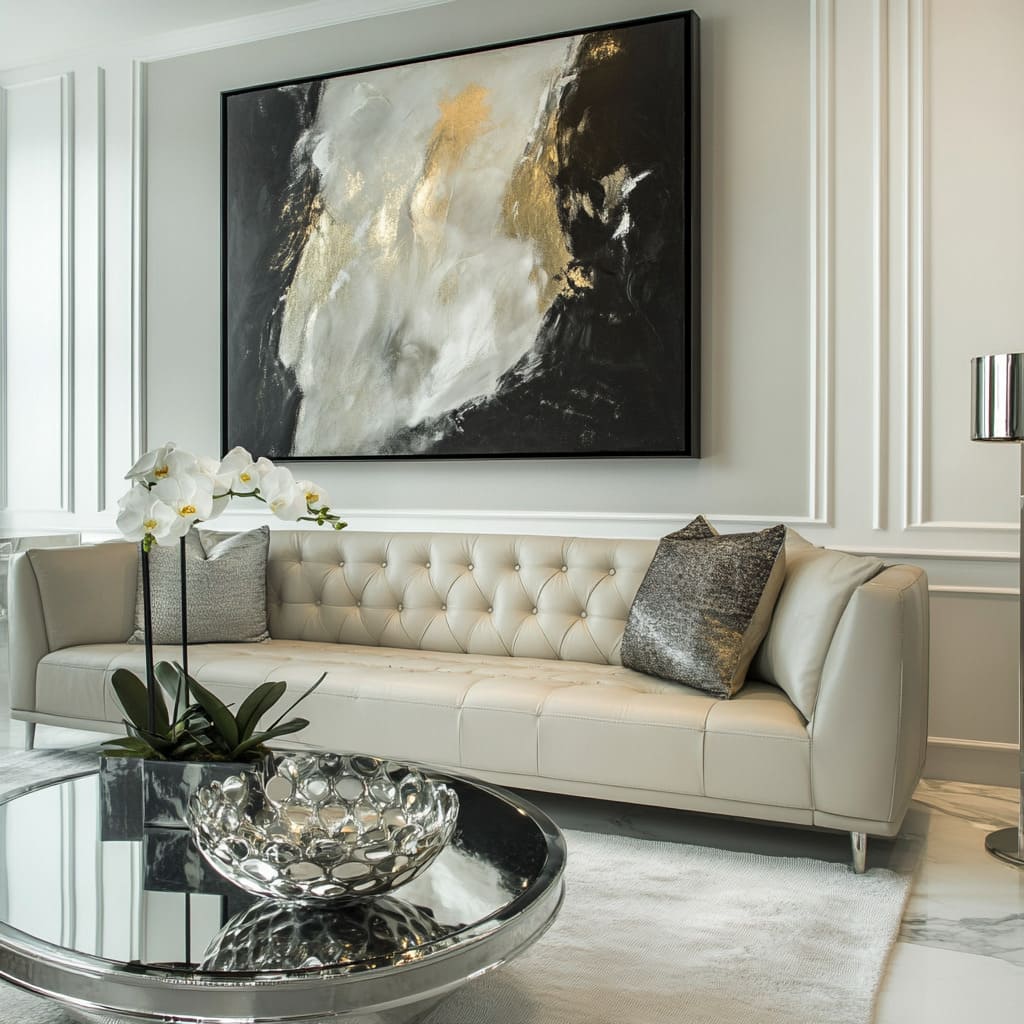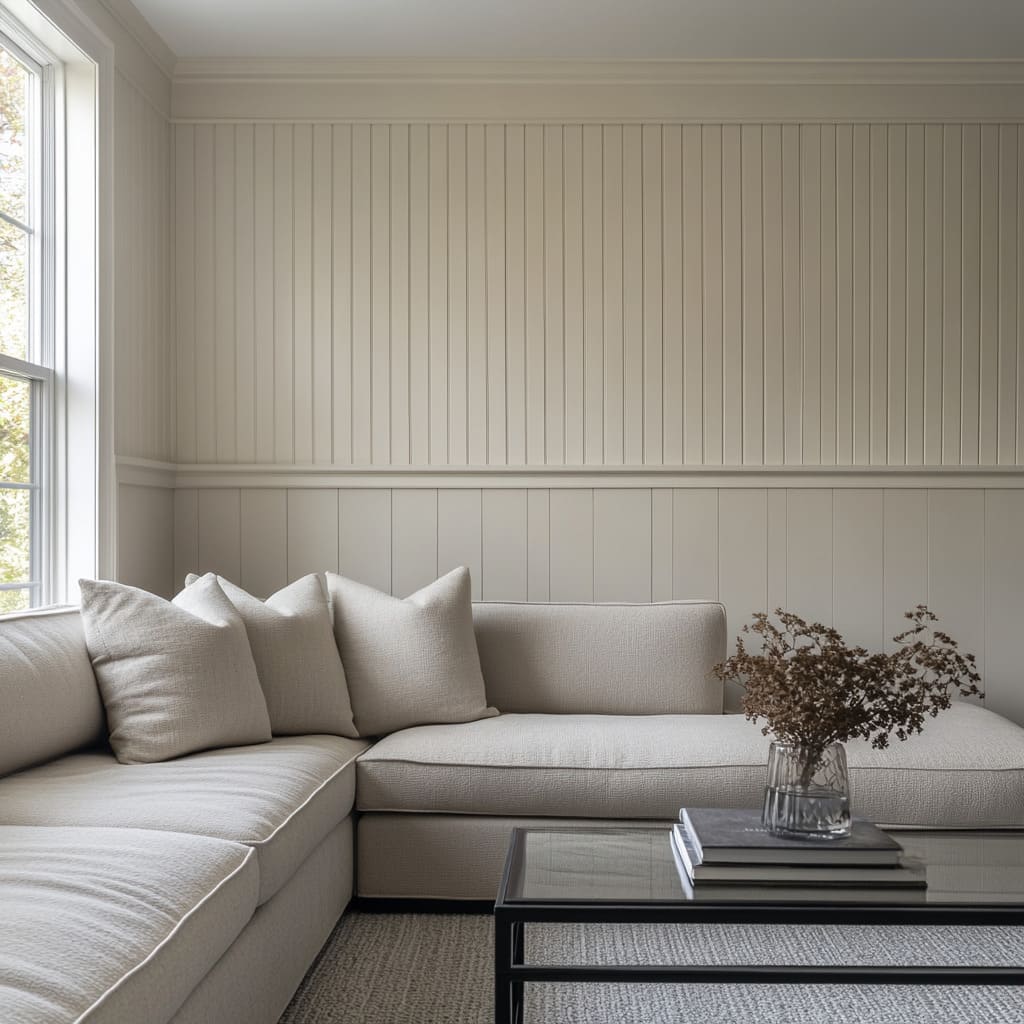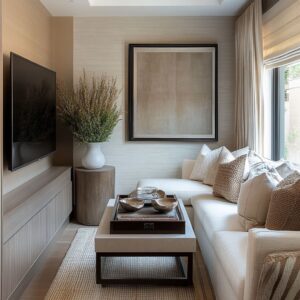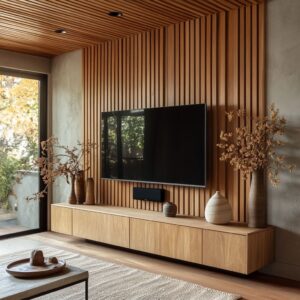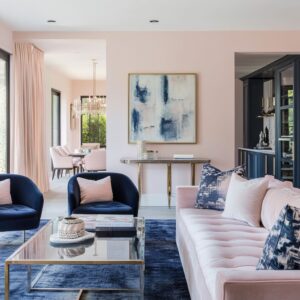Wainscoting, a design feature with deep historical roots, has long been cherished for its ability to enhance walls while adding depth and texture. Originating in the 16th century, it was initially used as a functional wall covering to protect the lower portion of walls from damage.
Over time, it has evolved far beyond its practical beginnings and become a decorative element that introduces sophistication and detail into any space. Whether found in a grand dining room or a cozy hallway, wainscoting brings a layer of interest that transforms plain walls into architectural features.
Historically, wainscoting was often crafted from wood, installed to protect fragile plaster walls in European homes. It later spread across different architectural styles, adapting to various interior needs.
As styles have shifted and modernized, so too has wainscoting. It remains a favorite today, not just for its functional benefits, but for the character and charm it adds to a room.
From classic raised panels to more modern interpretations, it serves as a design tool for shaping the feel of a room.
This article will explore a range of creative wainscoting ideas, showing how they can enhance your walls, no matter your preferred style. Whether you favor traditional elegance or lean toward contemporary simplicity, there’s a wainscoting design that can fit your space.
We’ll cover everything from timeless paneling styles to modern wainscoting ideas that push the boundaries of conventional design. The aim is to inspire readers to think of wainscoting not only as a functional wall covering but as an essential design element that can bring both texture and depth to any room.
Classic Wainscoting Styles with Modern Twists
Traditional wainscoting styles, such as raised panels and beadboard, are mainstays in many homes. Their enduring appeal lies in their ability to add structure and texture to a room, enhancing its sense of proportion and creating a layered, detailed look.
Raised panel wainscoting, one of the most iconic styles, features prominent, framed panels that bring depth to the walls. This design element has the unique ability to elevate any room, from formal dining areas to hallways.
Beadboard, another classic choice, offers a more relaxed and casual feel, often used in coastal or farmhouse-style interiors. Both styles have stood the test of time because of their ability to seamlessly integrate into a variety of spaces.
What makes traditional wainscoting timeless is its versatility. It can be painted, stained, or left in its natural wood finish, depending on the desired effect.
Whether it’s used to evoke a classic, stately look or to introduce a subtle texture in an understated room, wainscoting offers an easy way to make walls stand out. Even though these styles have been around for centuries, they continue to be relevant in today’s homes, providing a foundation for more creative adaptations.
Combining Traditional Wainscoting with Modern Color Palettes
One of the most exciting ways to refresh traditional wainscoting is by experimenting with modern color combinations. Gone are the days when wainscoting was restricted to neutral or wood tones.
Today, designers are pairing classic wainscoting styles with bold, unexpected colors, transforming a room from ordinary to extraordinary. Take, for example, the combination of blush pink wainscoting paired with charcoal upper walls.
This contrast introduces softness while maintaining a sense of drama. The blush hue adds warmth and charm, while the deep charcoal color provides a striking backdrop.
Together, they create a space that feels balanced and unique. It’s a perfect example of how color can breathe new life into a traditional design.
By embracing color, traditional wainscoting becomes more than just a nod to the past—it’s transformed into a dynamic design feature. Whether you opt for a soft palette to create a calm environment or choose bolder tones to make a statement, this blend of tradition and modernity is key to refreshing any room.
Full-Height Wainscoting in Contemporary Spaces
For a more dramatic and modern take, full-height wainscoting is an excellent option. This approach sees wainscoting extended from floor to ceiling, creating a seamless vertical line that enhances the room’s height and brings a bold, architectural feel to the space.
The effect is particularly striking in modern interiors, where simplicity and clean lines are favored. By using full-height wainscoting, walls gain texture and depth, making the room feel more expansive.
Consider a living room where full-height black wainscoting is paired with sleek, minimalist furniture. The dark panels ground the space, while the streamlined furniture ensures the room doesn’t feel overwhelmed by the richness of the wainscoting.
The result is a room that feels simultaneously modern and inviting. The vertical paneling elongates the walls, drawing the eye upward and giving the room a sense of grandeur, even in smaller spaces.
By extending the wainscoting to the ceiling, traditional design rules are broken, offering an opportunity to make bold design statements. This approach works particularly well in minimalist or modern settings, where the focus is on creating a cohesive look with fewer decorative elements.
Bold and Dramatic Wainscoting Colors
Deep, Dark Wainscoting for a Dramatic Effect
Deep, moody hues like navy blue and charcoal can transform a room, adding a sense of richness and depth that lighter colors often cannot achieve. Dark wainscoting brings a bold presence to a space, anchoring the design while adding visual weight to the room.
One of the standout features of using darker tones is their ability to create a grounded, cozy atmosphere while still feeling sophisticated.
Take, for example, the navy blue and white wainscoting design in a living room. Here, the deep navy wainscoting adds drama to the space, contrasting beautifully with the crisp white upper walls.
The contrast between the dark and light tones creates a sense of balance, preventing the room from feeling too heavy while maintaining the boldness of the design. This color combination also enhances the natural light in the room, as the white reflects and amplifies it, keeping the space from becoming too dim despite the dark lower walls.
Navy blue and charcoal shades are perfect for those looking to introduce an element of drama without overwhelming a room with patterns or intricate details. These colors naturally draw the eye, making them ideal for rooms that are meant to feel intimate, grounded, and stylish.
Contrasting Light and Dark for Impact
One of the most effective ways to elevate wainscoting design is through the strategic use of contrasting colors. By pairing dark wainscoting with lighter upper walls—or vice versa—you can create an engaging visual dialogue that emphasizes the room’s architectural features and adds dimension.
Consider a hallway with soft blush wainscoting and dark charcoal upper walls. In this space, the contrast between the blush pink and the deep charcoal creates a striking yet harmonious effect.
The blush tones soften the overall look, adding warmth and a touch of softness, while the charcoal adds depth and a modern feel. This interplay between light and dark allows the wainscoting to stand out as an architectural feature while still maintaining balance within the room.
Blending Dark Wainscoting with Natural Light
Dark wainscoting doesn’t have to make a room feel closed off or overly dim. With the right balance of natural light or thoughtful artificial lighting, deep colors can feel inviting and even airy.
The key is in the way light interacts with the space, reflecting off lighter elements and softening the impact of the darker tones. In a living room with deep charcoal wainscoting, for example, natural light streaming through large windows plays a vital role in keeping the room open and welcoming.
The darker panels are offset by lighter furniture or décor, such as a white sofa or light wood flooring, ensuring that the space doesn’t feel too enclosed. The interplay between the charcoal wainscoting and the brightness of the room creates a beautiful dynamic—while the dark walls add weight and drama, the natural light prevents the space from feeling too heavy.
Creative Shapes and Panel Configurations
Classic Rectangular Panels
One of the most enduring and popular wainscoting wall ideas is the use of classic rectangular panels. These clean-lined, symmetrical shapes are the foundation of many traditional and modern wainscoting designs, creating a sense of order and elegance that instantly elevates a room.
Rectangular panels can elongate walls, giving the illusion of higher ceilings and creating a visually pleasing rhythm throughout the space. In the charcoal and blush hallway, the rectangular wainscoting panels are particularly effective.
The paneling emphasizes the length of the hallway, drawing the eye forward and creating a sense of flow. This is especially useful in spaces like corridors or long rooms where you want to add visual interest without overwhelming the design.
The panels provide structure while maintaining a simple, classic look that works in almost any interior setting.
Full-Height Paneling in Minimalist Interiors
For those embracing a more contemporary aesthetic, full-height wainscoting is an increasingly popular choice. Extending the panels from floor to ceiling, this approach maximizes vertical space and creates a unified, streamlined look that pairs perfectly with minimalist interiors.
The result is a striking wall treatment that feels both bold and understated at the same time. In a minimalist living room with floor-to-ceiling black wainscoting, the paneling acts as a strong visual statement, anchoring the space without the need for excessive decoration.
The sleek black panels provide a unified backdrop for simple, modern furniture, such as a low-profile sofa or an understated coffee table. The full-height design elongates the walls, making the space feel larger while maintaining a clean, uncluttered aesthetic.
Mixing Wainscoting with Natural Materials
Combining Wainscoting with Stone or Wood Features
Wainscoting has the unique ability to work in harmony with natural materials like stone and wood, enhancing the texture and visual depth of a space. When combined with these elements, wainscoting offers a balance between architectural refinement and organic warmth.
The result is a layered look that feels both intentional and inviting. One standout example is the pairing of neutral wainscoting with a rustic stone fireplace in a modern farmhouse living room.
The stone adds a rugged, natural texture that contrasts beautifully with the clean lines of the wainscoting. The warmth of the stone brings an earthy feel, while the neutral-colored wainscoting ensures that the walls don’t compete with the rich textures.
This combination creates a sense of depth and coziness, especially when the room is lit by a fire.
Wood features are another excellent material to pair with wainscoting. In a space where light wood floors meet darker wainscoting, the natural grain of the wood adds softness to the room, making it feel more grounded.
The contrast between smooth painted panels and the organic feel of wood is both visually striking and tactile, adding an extra layer of character to the room.
Softening Modern Wainscoting with Organic Textures
While wainscoting can sometimes have a formal appearance, incorporating organic textures can instantly soften the space, making it feel more relaxed and lived-in. Materials like wood flooring, woven rugs, and leather furnishings work wonders in balancing the formality of wainscoting, particularly in contemporary spaces.
Take, for example, a living room where tan leather sofas and marble-topped coffee tables are paired with deep-colored wainscoting. The warm tone of the leather brings a natural, earthy contrast to the darker wainscoting, making the room feel inviting rather than rigid.
Meanwhile, the smooth, luxurious surface of the marble complements the structured look of the panels, but its natural veining adds a touch of organic beauty. This careful balance of materials helps the room feel polished, yet approachable.
Wainscoting in Hallways and Transitional Spaces
Elevating Narrow Spaces with Wainscoting
Wainscoting is not just for grand living rooms or dining areas—it can work wonders in narrow spaces like hallways and transitional zones. In these often-overlooked areas, wainscoting adds much-needed visual interest, helping to define the space and making it feel more intentional.
A perfect example of this is the blush and charcoal hallway, where the contrast between the colored wainscoting and the darker upper walls not only enhances the overall aesthetic but also draws attention to the proportions of the space. The wainscoting not only adds architectural interest but also makes the hallway feel like a thoughtfully designed extension of the home.
Mirror Accents and Wall Art with Wainscoting
Pairing mirrors and wall art with wainscoting is a fantastic way to introduce decorative elements without overwhelming the space. Mirrors work beautifully with wainscoting because they reflect light and open up a room, making it feel more spacious and bright.
In the hallway example with the large oval mirror, the soft blush wainscoting frames the mirror perfectly, creating a sense of symmetry and balance. The mirror enhances the depth of the room, making the space feel larger than it actually is, while the wainscoting anchors the look.
When it comes to wall art, pairing framed pieces with wainscoting allows you to highlight artwork without cluttering the walls, adding personality while keeping the design cohesive.
Modern Farmhouse and Minimalist Wainscoting Combinations
Blending Traditional Wainscoting with Modern Farmhouse Design
The charm of the modern farmhouse aesthetic lies in its ability to marry rustic simplicity with clean, modern lines. This combination creates spaces that feel cozy yet polished, effortlessly blending timeless warmth with contemporary elegance.
When it comes to wainscoting in modern farmhouse interiors, simplicity reigns supreme. The goal is to enhance the overall look with subtle detailing that doesn’t overpower the room but instead complements the other design elements.
A perfect example of this balance can be found in a living room featuring white wainscoting. Here, the wainscoting serves as a backdrop to soft, neutral furnishings, such as linen-upholstered sofas and textured throw blankets.
The white wainscoting adds structure and visual interest to the space without detracting from the relaxed, homey vibe that farmhouse style is known for. The contrast between the crisp white panels and the natural wood tones of the flooring or furniture adds warmth while maintaining a sense of cleanliness and order.
To achieve the best result, modern farmhouse wainscoting ideas typically embrace light, neutral tones paired with natural textures. This look is about restraint and subtlety, using wainscoting to quietly enhance the room’s charm rather than take center stage.
Minimalist Wainscoting in Urban Loft Interiors
In contrast to the rustic warmth of the modern farmhouse, minimalist and industrial loft interiors rely on sleek lines and simplicity. Wainscoting, often seen as more traditional, can still find a place in these modern spaces if used thoughtfully.
By combining minimalist principles with contemporary wainscoting, designers can introduce depth and texture without detracting from the clean, uncluttered aesthetic that defines loft-style living. A striking example of this is the use of full-height black wainscoting in an urban loft.
The wainscoting, running from floor to ceiling, gives the walls texture and definition while maintaining the space’s minimalist appeal. The dark, sleek panels provide a sophisticated backdrop, allowing the room’s furniture and art pieces to stand out.
In these settings, furniture is typically streamlined and industrial—think metal frames, exposed brick, and polished concrete floors—which works beautifully with the bold contrast of the wainscoting.
In minimalist lofts, the key is simplicity: the wainscoting acts as a grounding element, adding structure to the room without overpowering it. The monochromatic approach, with darker tones like black or charcoal, ensures that the space feels modern and cohesive.
Combining Wainscoting with Bold Patterns and Textures
Using Patterned Rugs and Textured Furnishings
While wainscoting can bring structure and elegance to a room, it can also be elevated by introducing rich textures and bold patterns. Patterned rugs, textured throws, and decorative pillows can all work together to complement the clean lines of wainscoting, adding layers of interest without overwhelming the space.
For instance, imagine a room where modern navy blue wainscoting sets the tone, while an intricate Persian rug brings color and pattern to the floor. The deep navy hue anchors the space, while the rich pattern of the rug adds depth and character.
The rug’s ornate details offer a stunning contrast to the sleek lines of the wainscoting, creating a room that feels both timeless and eclectic.
In addition to rugs, textured furnishings—such as a velvet armchair or knitted throw—can soften the formality of wainscoting. These pieces introduce tactile interest, creating a layered look that makes the space feel both polished and comfortable.
Balancing Texture with Smooth Surfaces
A key component of creating a cohesive design is balancing different textures to create depth and visual interest. When working with wainscoting, it’s important to introduce elements that balance the smooth, clean lines of the panels.
Consider a room where a rich, patterned rug is paired with a smooth marble-topped coffee table. In this space, the wainscoting acts as a frame, while the textures play off each other to create a balanced yet dynamic look.
The smooth marble surface complements the clean lines of the wainscoting, while the rug’s pattern introduces a touch of softness and whimsy. These contrasting textures create a sense of balance that makes the room feel both sophisticated and cozy
Conclusion
Wainscoting remains one of the most versatile and impactful design elements that can truly enhance the character of any space. Whether you’re styling a modern wainscoting living room or updating a more traditional home, it brings texture, depth, and sophistication to your walls.
By adding architectural detail, wainscoting gives otherwise plain walls a sense of structure and balance. It can be used to frame artwork, create a visual anchor for furniture, or simply make a room feel more refined.
From rustic charm to minimalist elegance, wainscoting adapts to various styles while enhancing the overall design. It’s not just about adding visual interest—wainscoting also changes the way a room feels.
It can make a large space feel more intimate or bring a sense of polish to a casual room. And the beauty of it lies in its adaptability; wainscoting works just as well in a cozy farmhouse living room as it does in an urban loft.
It is an easy way to elevate a space without requiring excessive decor, making it a timeless design tool.
With so many modern wainscoting ideas available, the possibilities are endless. Wainscoting invites creativity, allowing you to play with different colors, patterns, and textures.
Whether you prefer the warmth of wood, the sleekness of a full-height installation, or a combination of both, wainscoting can be tailored to your personal style. You can experiment with bold color combinations like charcoal and blush or keep it classic with crisp white paneling.
Textures like stone, leather, or patterned rugs can further enhance the impact of your walls, making the design uniquely yours.
The interplay between wainscoting and other materials—whether natural stone, wood, or plush textiles—ensures that your space feels layered and dynamic. So, whether you’re looking to transform a narrow hallway, modernize your dining room, or introduce a bit of depth to your living area, wainscoting offers a wealth of options to explore.
With the right mix of design choices, wainscoting can become a powerful tool for expressing your personal style and adding lasting value to your home.

